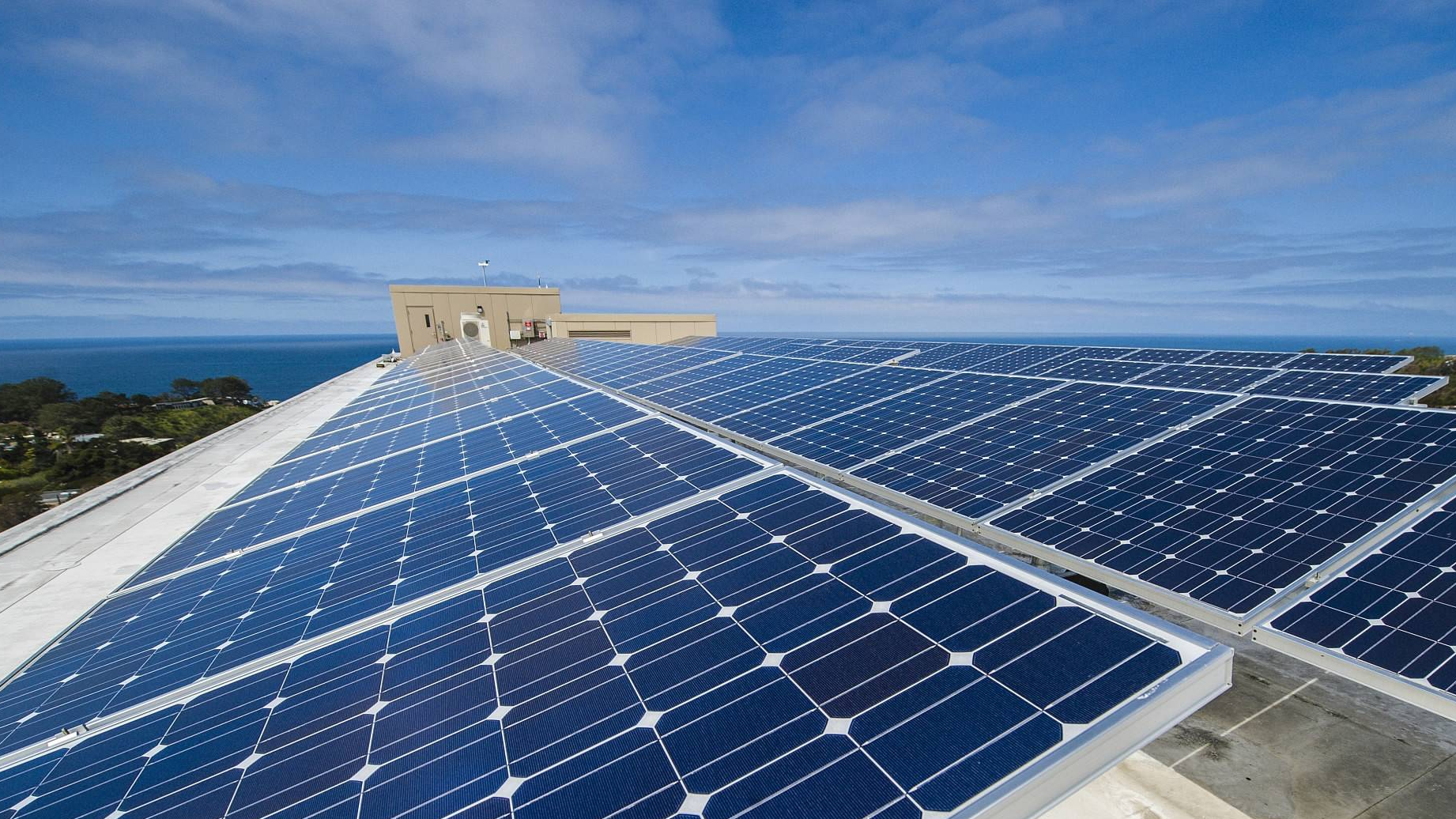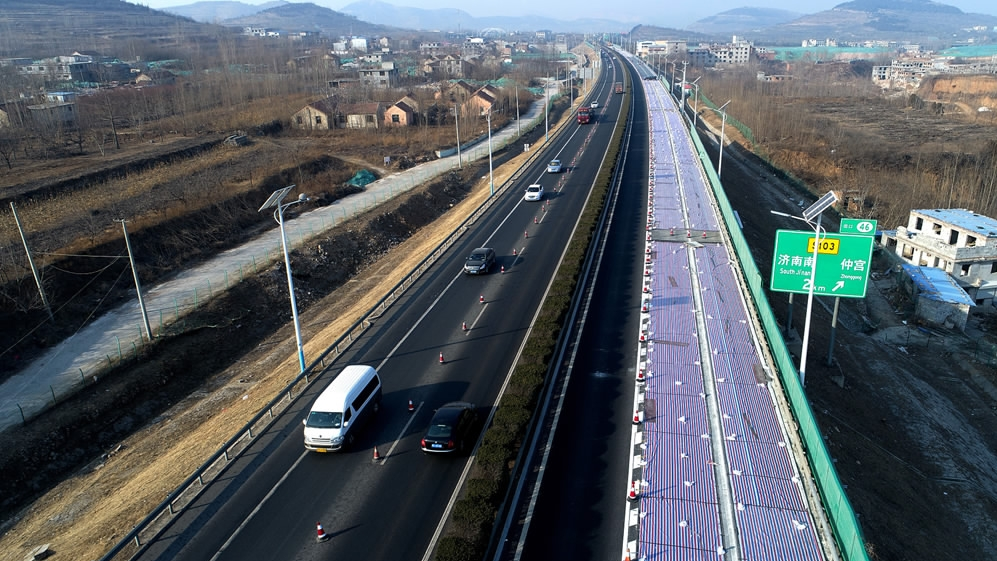
Editor's note: Djoomart Otorbaev is the former prime minister of the Kyrgyz Republic, a distinguished professor of the Belt and Road School of Beijing Normal University, and a member of the Nizami Ganjavi International Center. The article reflects the author's views and not necessarily those of CGTN.
In a previous article, it was demonstrated that renewable energy production has risen at an unprecedented rate. Yet even at this pace is not sufficient to achieve carbon neutrality on the planet by 2060. What additional efforts should the world community, and above all the leading countries, take now to achieve this goal? Accordingly, we will focus on current trends in the production of electricity by solar cells.
The most promising technology for converting sunlight into electrical energy has been proven to be materials and devices operating on the photovoltaic (PV) principle. Solar PV accounts for 3.6 percent of global electricity production today and it's the third largest renewable energy technology after hydropower and wind. In 2021, annual solar PV output exceeded 1,000 TWh, up 22 per cent from a year earlier. Last year this technology showed the second-largest absolute generation growth among renewable technologies after wind.
In 2020, a historical event occurred – the global levelized cost of electricity (LCOE) of photovoltaic solar panels fell below the level of the cheapest electricity generation from fossil fuels. The global solar PV market has reached $200 billion in 2021. But since such generation has become the cheapest, it's expected to reach $1 trillion in 2028 at a growth rate of 25.9 percent.
Solar PV has been the fastest-growing renewable energy in recent years. But it turns out that even a growth rate of 22 percent would not be enough to achieve the net zero emissions (NZE) goal by 2050. During 2022-2030, annual growth in this sector should be at least 25 percent, which would require political will and determined efforts from the public and private sectors. Even the record annual capacity increase of 150 GW in 2021 is only about a third of the required yearly expansion to reach the NZE goal.
How are the leading countries coping with the demand to increase generation from solar panels by 25 percent annually? In 2021, China accounted for about 38 percent of the growth in solar PV production, with the U.S. following it with a 17 percent increase and the countries of the European Union with a 10 percent rise. China has managed to increase the volume of electricity generation using photovoltaic technologies to the required level.

Solar highway in Jinan, Shandong Province of China /VCG
Solar highway in Jinan, Shandong Province of China /VCG
Over the past decade, China has become the undisputed leader in the investment, innovation, and, therefore, in producing solar panels. The country has invested more than $50 billion in new photovoltaic capacity, ten times more than Europe. In the last ten years alone, up to 300,000 manufacturing jobs have been created across the entire solar PV value chain in the country. China's industrial policy prioritizing solar PV as a strategic sector has enabled continuous investment and innovation throughout the supply chain and capitalized on economies of scale. This wise policy has cut operating costs of solar cell production within ten years by more than 80 percent.
According to the IEA report, China's share in all critical stages of solar panel production today exceeds 80 percent. For crucial battery elements, including polysilicon and wafers, and based on current trends in this market, this share will rise to more than 95 percent in the coming years. The excessive geographic concentration of solar panel production in China was not helped by the discriminatory tariffs imposed on their imports by the U.S. and EU.
Most of China's current demand for electricity is met by coal-fired power plants, which is damaging to the environment. A new study by researchers from Harvard University and Tsinghua University found that by 2060, more than 43 percent of China's electricity could come from solar panels, helping the country meet its decarbonization goals. Critically, the researchers found that the cost of producing one kilowatt-hour of electricity by that time, including the cost of batteries, would fall below $2.5 cents.
Thus cheap electricity supply by solar panels will likely see coal displaced as China's leading source of electricity, as the cost of coal-fired generation is currently in the range of 5 to 6.5 cents per kilowatt hour. It is likely that in the future coal prices will continue to rise due to more complicated mining conditions and increased investment costs under pressure from ESG (Environmental, Social and Governance) financing principles. "Today, subsidy-free solar power has become cheaper than coal power in most parts of China, and this cost-competitive advantage will soon expand to the whole country due to technology advances and cost declines," Tsinghua University's researcher Xi Lu said.
To achieve the NZE goal by 2060, the world's leading countries can learn from China's example and boost their investment, innovation and generation of solar energy. We live on the same planet, and China alone cannot cope with decarbonization and global warming.
(If you want to contribute and have specific expertise, please contact us at opinions@cgtn.com. Follow @thouse_opinions on Twitter to discover the latest commentaries in the CGTN Opinion Section.)